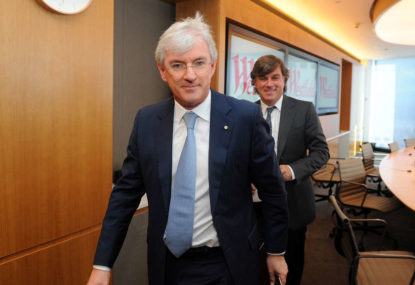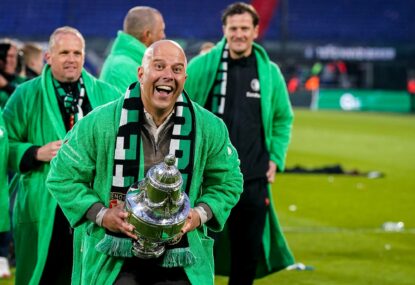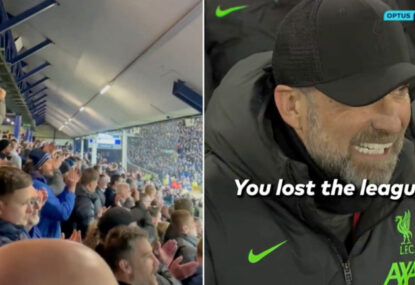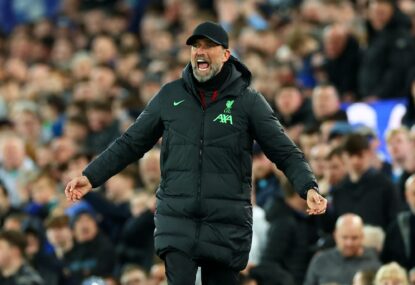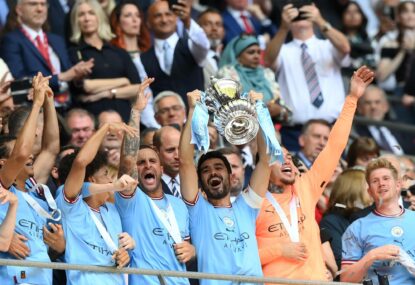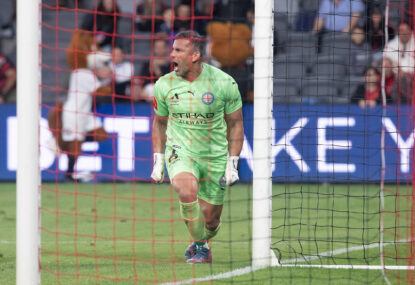The FFA’s latest press conference to clear up concerns over leaked names of banned fans – in which new chairman Stephen Lowy made his first appearance – doesn’t seem to have moved the issue closer to resolution.
As the A-League’s so-called ‘boycott round’ has run its course, there’s a big question as to what happens from here.
Regardless of how the FFA and fan tension plays itself out, the saga is playing a role in raising a lot of issues which have been bubbling below the surface for a number of years.
For those concerned about the implications of the impasse, despite the issues there is a floor on just how low things can go, mainly due to the large membership bases of both Melbourne Victory and Western Sydney.
The membership numbers of both of these teams – and the aggregate A-League membership numbers in Melbourne and Sydney once Sydney FC and Melbourne City are added – means the A-League is robustly anchored in each major Australian city even if its anchorage is less certain elsewhere.
The issues can be considered to stem primarily from the quality of FFA management performance in recent years, not the performance of A-League team administrators.
Essentially, the FFA administration are like any governing party that has been in power for a time. When they first rise to power they are full of energy, ideas and drive in carrying their vision out.
Recently there was a transition between Frank Lowy and his son Steven who took over the role as FFA chairman at the same time as two new board members, which is effectively a sign of continuity.
Rather like an election, such a time should have heralded an introspection and reflection of how the fraternity has evolved up to the present time. It should have stimulated debate within the football fraternity over what the priorities are and where the energy should be directed.
During this transition process, this debate seems to have failed to occur, former FFA board member Jack Reilly, while voicing his support for fans, made a rather interesting observation.
“We have a new board in and nobody yet has mentioned a strategy whatsoever. There needs to be a coherent seven-year plan in place,” he said.
This contrasts sharply with some of the observations Tony Tannous made in his Roar article regarding Melbourne Victory chairman Anthony di Pietro at last week’s Victory in Business Luncheon.
Tony made the observation of, “Think the Victory and you think about a properly run football club, balancing football excellence with stability in the boardroom and office, and growth on and off the pitch.”
This seems to contrast with the FFA, who, to quote Di Pietro from the Victory in Business Luncheon, are mired in “mediocrity”.
It’s hard not to feel there may be some truth to this if reports are indeed true that Damien De Bohun was responsible for overriding the referee’s decision and making Melbourne Victory put their away strips back on over the weekend, which notably clashed with Wellington’s grey strips.
It can now be argued there has been a shift, where the dedicated football fraternity are more strongly engaged with their A-League teams in a meaningful way and a ‘club over country’ mentality has slowly taken root.
It’s not surprising then that this goes two ways, and the A-League team administrators have had their ears closer to the ground while David Gallop was off in India and read both the situation and the response it demanded much more skilfully than their FFA counterparts.
In terms of the balance of power within the football fraternity, unlike at the time of the A-League’s inception, it is now held within and around the trio of Melbourne Victory, Western Sydney and Sydney FC and not the Socceroos.
This is reflected in the now major contrast in atmosphere at A-League games and Socceroos games.
Major A-League derbies are events comparable to major Socceroos fixtures, which are increasingly becoming more relevant in engaging the mainstream Australian sports fan.
The current impasse between fans and the FFA, despite some short-term awkwardness, should bring the issues that needed debating during the administrative transition into focus.
In short it will likely turn into the debate we have to have.
This includes an upcoming meeting between owners and the FFA which will coincide with a meeting between fans from each team and the FFA, which is also in the pipeline. Mariners owner Mike Charlesworth is calling for structural changes whereby teams have more autonomy and the league CEO reports to them.
If we then take this principle and apply it to the previous two weeks, imagine if the position of A-League chief of operations had the implied weight of Melbourne Victory, Western Sydney and Sydney FC behind it instead of being seen as something of a deputy to both Gallop and Lowy.
There’s a fair chance that such a person reporting to club chairmen would have been reading a different script to that of De Bohun in the past two weeks.
If such a person had been negotiating the A-League player salary contract separate to an FFA negotiation regarding national representative teams, there is a more likely chance that issues stemming from A-League player negotiations would not have been able to spread to engulf the Matildas.
For this reason it is worth the football fraternity re-visiting the Crawford recommendation for the domestic league to be independent of the governing body and move it up the ‘to do’ list.





























































































